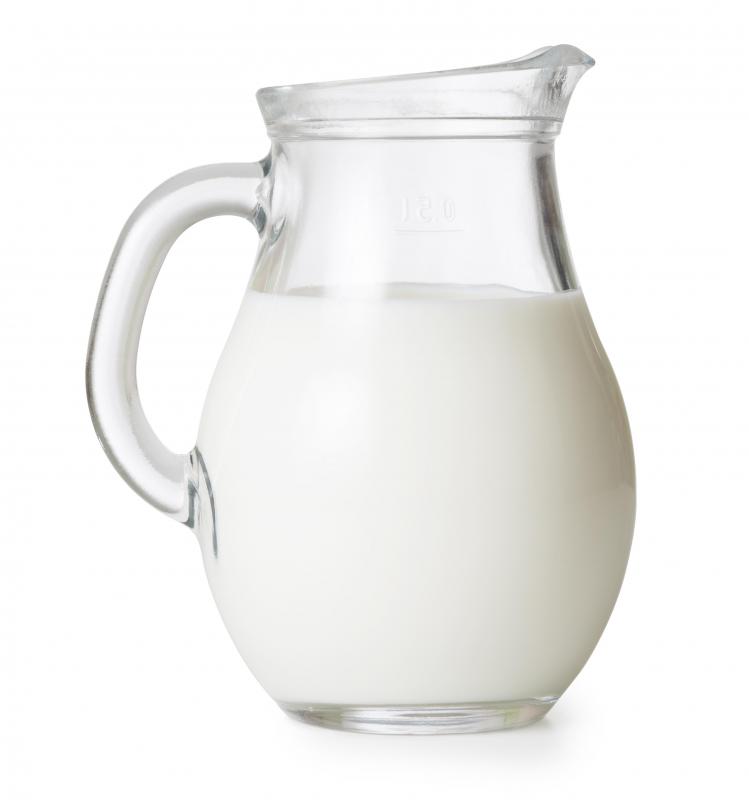At WiseGEEK, we're committed to delivering accurate, trustworthy information. Our expert-authored content is rigorously fact-checked and sourced from credible authorities. Discover how we uphold the highest standards in providing you with reliable knowledge.
What Is Fynbo?
Fynbo is an off-white or tan-colored Danish cheese made from cow's milk that has a flavor reminiscent of buckwheat grain. It is typically formed into a 4-pound (1.8-kilogram) cylinder cheese shape and aged for several months, retaining about a one-third fat content. The cheese originated on the Danish island of Fyn, the third largest of the Danish islands, and is still produced there as of 2011.
Since Fynbo is a rennet cheese, it improves in flavor with aging, and is harder than farmer's cheeses that can be eaten immediately after being dried. It is characterized as a semi-hard cheese, which is only one level below the hardest types of cheeses classified as hard. Danish cheeses come in many types and Fynbo is one of the local favorites, though it can be difficult to find in other countries, such as the US. It is sometimes compared to another Danish cheese called Samso, also named after an island of Denmark much smaller than Fyn. Samso cheese is slightly elastic, has some holes in it like Swiss cheese, and is also made from cow's milk.

Even though Fynbo is exported to the international market and sold alongside other types of cheeses, it is usually only found in gourmet cheese shops. Cheese connoisseurs compare it most closely to the flavor of Monterey Jack cheese, which is recommended as a substitute in recipes that call for Fynbo. Since many Danish cheeses are mild and creamy in flavor and texture, they can often be substituted for one another in recipes. In Denmark, itself, it is commonly eaten in salads and as slices in sandwiches as a favorite type of cold cheese.

Rennet-prepared cheeses have the longest shelf life of cheese varieties. The harder the cheese is, typically the longer it can be safely stored. Since Fynbo is a semi-hard cheese and is often flavored with brine, which acts as a preservative, it can be stored for a long period of time.
Cheese production in Denmark has been traced back to 3,000 BC, and, as of 2003, it was manufacturing 327,000 tonnes annually, of which 77% was exported. Germany is the largest importer of cheese in the EU in general and Denmark's largest cheese export market, followed by Sweden and the UK. Despite Denmark's relatively small size among its European neighbors, as of 2005, it was one of the world's top five cheese exporters, including Germany, France, the Netherlands, and Italy.
Interestingly, the names and recipes of some cheeses are protected internationally by the Stresa Convention of 1951. These top-protected cheeses are Roquefort in France, and three varieties from Italy of Gorgonzola, Parmigiano, and Pecorino. Fynbo cheese, which used to be called Danish Gouda opstukken until 1952, falls within a group of 30 other cheese names on the global market that are accorded mutual permission. This means that the name can be used for domestic or international exports for Fynbo when produced in other nations. Only seven countries have agreed to the Stresa Convention protections for cheese origins, however, all of which exist within the European Union.
AS FEATURED ON:
AS FEATURED ON:












Discuss this Article
Post your comments